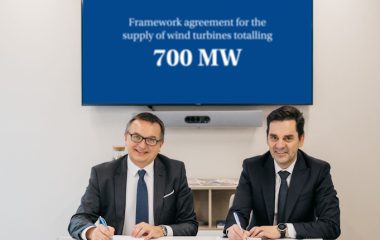
Photo: Twitter/Serbian Ministry of Mining and Energy
Share
Share
Serbia and Republika Srpska will jointly build the Foča and Paunci hydropower plants (HPP) on the upper Drina river in the Serb entity of Bosnia and Herzegovina (BiH), with a total installed capacity of about 95 MW, Serbian Mining and Energy Minister Aleksandar Antić said following a session of the Serbia-Republika Srpska energy committee, according to reports.
The committee, which met at the Zvornik hydropower plant on the Drina river in Mali Zvornik, Serbia on August 22, agreed the construction of HPPs Foča and Paunci, worth EUR 200 million, will be carried out by Serbia’s state power utility Elektroprivreda Srbije (EPS) and Elektroprivreda Republike Srpske (ERS), according to Antić.
Antić noted that the two governments should verify the deal at their joint session in Trebinje, BiH on August 29. He also said that he hopes the formal and legal matters concerning the construction of Foča and Paunci will be resolved by the end of 2018, recalling that ERS should secure a concession for the projects.
Održana sednica Energetskog komiteta #RSrbija i #RSrpska u hidroelektrani Zvornik
Ministri @AAnticBG i #PetarĐokic ocenili da je zajednički cilj izgradnja HE Foča i Paunci na gornjem toku reke Drine
Memorandum o realizaciji projekta očekujemo na sednici dve Vlade 29.8. u Trebinju pic.twitter.com/brw0BiR2iI— mre (@MiningEnergyRS) August 22, 2018
For his part, Republika Srpska Minister of Industry, Energy, and Mining Petar Đokić said that apart from planning to jointly build HPPs Foča and Paunci with Serbia, the entity is close to inviting bids for the construction of HPP Buk Bijela. The session was also attended by EPS acting General Manager Milorad Grčić.
According to ERS’ website, HPP Foča would have an installed capacity of 44.15 MW and an average annual production of 175.9 GWh of electricity, while HPP Paunci would have an installed capacity of 43.21 MW and an average annual output of 166.9 GWh of electricity.
Court complaints filed over Buk Bijela, Foča environmental permits
Buk Bijela should also be built on the upper course of the Drina River, about 11.6 kilometers upstream from Foča. It is planned to be equipped with three hydro generators with a total capacity of 93 MW.
The Republika Srpska government has awarded a concession for the construction of HPP Buk Bijela for a period of 50 years to ERS.
In July last year, the Republika Srpska government and China National Aero-Technology International Engineering Corporation (AVIC-ENG) signed a memorandum of cooperation on the construction of HPP Buk Bijela.
However, not all stakeholders are happy about the planned HPP investments. At the end of July, the Aarhus Resource Centre Sarajevo submitted two complaints to the District Court in Banja Luka against the environmental permits for HPPs Buk Bijela and Foča.




















Be the first one to comment on this article.